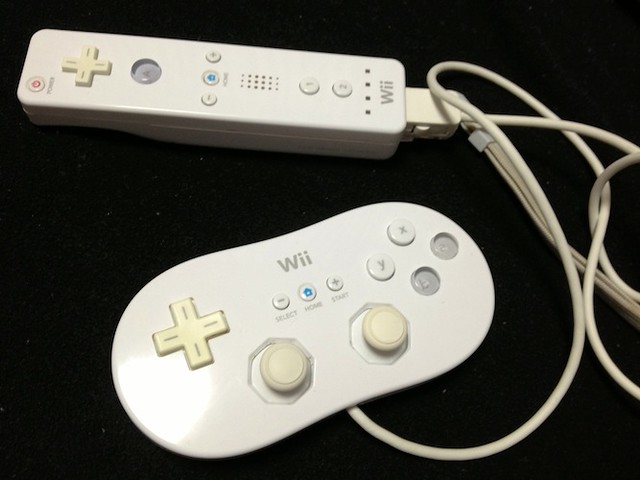"So you wanna work for Nintendo?" - A guide to Nintendo's recruitment system
2013-09-16Even amidst tough competition from iPhone , Playstation4, and XBOX One, Nintendo remains a big player in the video game market. Many kids dream about entering Nintendo, so naturally the competition to work there is very stiff. I was one of them, so in 2010 I entered the legion of fresh graduate applicants and went through their selection process. If you're curious on the process, read on (SPOILER: I didn't get hired). Without a doubt, Nintendo’s process is the most unique experience I ever experienced out of all the companies. Still curious? Here’s the complete steps Nintendo’s recruitment system for college fresh-graduates:
0. Signup
I signed up through their recruitment page (https://www.nintendo.co.jp/jobs/recruit/index.html). Applicants are given an account and application number to their internal recruitment system, and from there you signup for the various events that follows.
1. Company seminar (会社説明会)
First thing you signup for is their company seminar. It's held several times both in Tokyo and Osaka. While not a requirement, rumor has it that you get 'points' for participating, so people generally go. Also, no one is rejected at this level yet, so the spots are quickly filled. I show up to the event hall at Osaka, and there are close to a thousand people there, all dressed in cookie-cutter "recruit suits". Ushered by a staff, I grab a seat inside the huge hall. Here's what happened when I went:
- President's speech: 20-minute speech by Iwata-社長, about the principles that Nintendo holds, their current success (this was when DS and Wii still ruled, and the iPhone wasn't a heavy contender yet) and where he thinks they will go in the future. He wishes everyone good luck, and says he hopes to see us inside Nintendo.
- Questionnaire: After the speech, there's a 15-minute break, where I fill in a questionnaire form and write about my impressions on the event.
- Group discussion: Participants were split into groups of around 15-20 people, and had a 30-minute group discussion with 2 employees. A marketing guy and a software engineer was assigned to my group. There was a guy from a prominent game design school in my group that tries to dominate the conversation and drop some names of senpais (先輩) he know already working there. I asked some things mainly to the programmer, and he told us about his job creating tools and development kits for the game companies.

I got a cool book filled with photos of the employees' desks and interviews.
2. Entry sheet (エントリー・シート)
Through the recruitment page, I download a 2-page pdf which has to be hand-written (!) and snail-mailed (!) by a certain date. Out of all the companies that I have dealt with, Nintendo is the ONLY ONE still insisting on a mailed, hand-written application form. In my opinion, this is what separates the serious applicants from the wannabes. Even for Japanese natives, uncertain and flaky applicants would be weeded out by this requirement. Fast-forward later, after a week of writing and editing plus one whole day dedicated to just writing it cleanly on the form (I mess up writing kanji a lot, so had to rewrite the whole page many times), I sent my application in and hoped for the best.


If you're curious what my application looks like, here it is.
3. Web test (ウェブ・テスト)
To my surprise, my entry sheet passed and I'm instructed to take the online test. There are 3 subjects: Japanese, English, and Math, all of them multiple choice. Piece of cake, right? Nope. Out of all the online tests I've taken so far, for any Japanese company (and I've taken quite a lot), without a doubt Nintendo's online test is the most ridiculously, absurdly, hardest one. Here’s a brief explanation:
- Japanese: 10 one-page essays followed by 3-5 questions each, all in 20 minutes. At around 2-minutes per question, I was absolutely destroyed. Pushing on, I would never even finish reading the text in under 2 minutes, let alone have time to think through the questions. The English equivalent would be on par with TOEFL iBT test, and I don’t think even native Japanese speakers can go through this unscathed. Not without practice, at least. Topics ranged wildly from medicine, literature, science, and other things.
- Math: 10 math questions in 20 minutes. Generally they’re pattern recognition type questions. For example: You’re given an excel chart containing the weather, number of shop visitors, and revenue, for one full week. Some of the values are blank, so you need to extrapolate a pattern to fill the blanks based on the other information. These are not hard, if you practice the common patterns of solving these problems.
- English: 10 one-page essays followed by 3-5 questions each, all in 20 minutes. Finally something I could actually do! While this section shouldn’t pose too much of a problem for native English speakers, the questions were actually quite hard. Most of them were something you would find in instruction booklets and very detailed factory specs. Not the English you would encounter daily, and not exactly a cakewalk.
4. On-site test (筆記試験)
By this point, I was sure I'd failed that brutal online test. I didn't have much hope, but shockingly Nintendo invited me to an on-site test. There were 2 options for the on-site test for engineering-type applicants: hardware engineer and software engineer. I don’t know what the tests are for non-engineering applicants, but I heard they focus a lot on language skills. Considering my background, I chose the 'Software Engineer' test. The tests were held at Tokyo and Kyoto. They also change the problems each time, to prevent leaking questions and answers. When I arrived at the test site, there were around 500 people taking it, with less than 80 taking the 'hardware' test. There were 3 main sections of the test:
- General algorithm, Internet basics, and C: Basic algorithm and computer stuff. Write a little code in C that manipulates pointers, convert some numbers to HEX and binary, and some other easy problems that I don't remember now. If you’re a programmer worth any salt, this part shouldn’t be any trouble for you.
- Fermi estimation question: Mine was, estimate the number of doctors in Japan and explain your reasoning. I’ve heard other people have gotten something similar, like: how many cars and beauty salons are in Japan.
- Short essay: Write a short 1-page essay on something, generally related to recent news. I was asked to write about 「理科離れ」. At the time I'd never heard of this phrase and took a shot in the dark.
And this unfortunately, ladies and gentlemen, is where my adventure ended. Luck may have pushed me through the previous stages, but it wasn't enough to pull me through to the end. From an unofficial site, notminshu.com, around only 1 in 8 pass the on-site tests. Taking account the number of tests, there are around 3000 people taking it (there were around 6 tests at about 500 people each), thus around 300 people passed. For the passing applicants, the following stages are interview rounds (taken from the Nintendo site and talking to actual employees):
5. Interviews (面接)
Around 3 round of interviews follows, which are:
- HR interview.
- Head of HR department interview.
- A high-ranking member (probably the head of department of the department you're likely to be placed in).
I hope this experience sheds some light behind the recruiting process for the powerhouse that is Nintendo. A peek into how the sausage is made, so to speak. I went farther than I expected in the process, but I was bitter when I found out I'd been rejected. Looking back now, I realize it has been one of the most interesting experiences I've had in Japan. If you're currently a student in Japan, I'd definitely recommend signing up if only for the experience. Who knows? You may end up working on the next Mario game or Wii machine?
Now, I've left out a lot of details in this post, so if you're truly interested in learning more, drop me a line (@anditto_h) if you're ever in Tokyo, and we'll grab coffee.
Interested in learning more about interviewing for Japanese companies? Sign up for BizJapanese and learn more.

